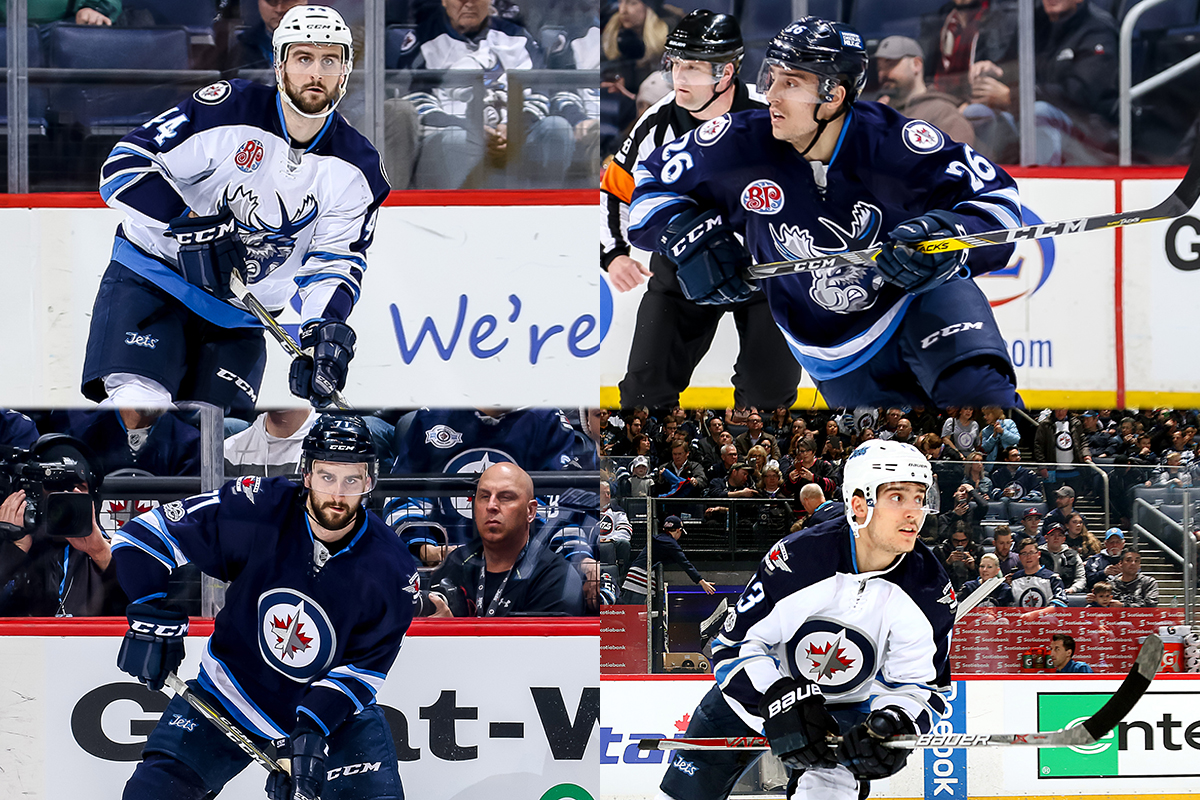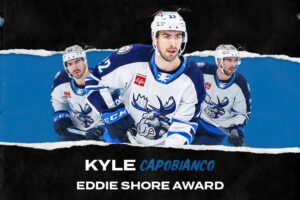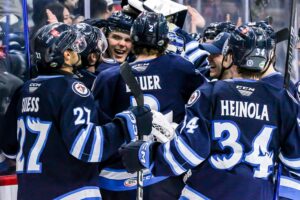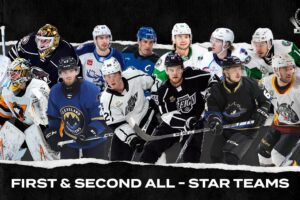by Daniel Fink | AHL On The Beat
The American Hockey League holds the distinction of being the primary affiliate league of the NHL with around 350 players playing in both leagues each season. Within that number are the players around the league who consistently travel back and forth between their NHL and AHL clubs. These players provide valuable depth and can step into the NHL lineup for any number of reasons; whether it be injury, suspension or a chance to prove themselves if a team wants a different looking lineup. At the AHL level, these players are key contributors to the team’s success. Two skaters occupying this back-and-forth role with the Winnipeg Jets and Manitoba Moose are defenceman Julian Melchiori and forward Brandon Tanev.
Melchiori’s name is a common sight on the transaction news page. The fifth-year professional made 11 trips between the Moose and Jets this season. An important presence on the Manitoba blue-line this season, Melchiori had eight points (2G, 6A) in 40 games with the Moose. The former Atlanta Thrashers third round selection is now patrolling the defensive zone for the Jets, playing a career-high 16 games and tallied his first NHL point March 28 against New Jersey.
Tanev is in his first full year as a pro following a four-year career at Providence College. After cracking the Jets roster to start the season, Tanev played 35 games for the Jets while picking up four points (2G, 2A). The speedy winger was re-assigned to the Moose on Dec. 28 and made six trips between the two teams through February. Tanev picked up nine points (3G, 6A) in 33 games for the Moose, and is now back with the Jets, pushing his total games played with the big club to 49.
With a 76 or 82 game schedule and constantly shifting variables, a call-up or assignment is always a possibility for players like Melchiori and Tanev going back-and-forth. In a fast-paced world of three or four games a week, travel and practicing, the players don’t waste time worrying about when that call might come. It’s about preparing as best they can in their current situation.
“You never know the full story on what’s going on up there (with the Jets),” explained Melchiori. “Honestly, I just try to focus on every day wherever I am and doing my best wherever I am. Sometimes it’s in the back of my mind, but a lot of the time I’m just living day-by-day.”
Despite there being a level of uncertainty as one of the first players on the call-up list, the Moose have the advantage of playing in the same city as their NHL affiliate. This relieves some of the stress for players, especially when both teams are at home as they are throughout March. When it comes to getting that call, Tanev recognizes the importance of taking advantage of every time he suits up for the Jets.
“Every opportunity is big. You have to go out there and play your game. Play the game they want you to play and play the game your team needs you to play ultimately to go out there and get two points and help your team in any situation.”
A unique experience for players heading between the AHL and NHL is occupying stalls in two dressing rooms, sometimes alternating multiple times in a week. Spending so much time with two teams gives the players a stronger appreciation of the link between the affiliates.
“I feel like I’m part of two teams, one big team almost. Even most guys on the Moose, we all feel like part of one family. They treat us so well here and we’re so close to each other. We have a lot of friends on both teams so I feel like it’s one big group and that’s the way I approach it.”
Tanev has similar thoughts and credits the players and staff within the organization helping to make the transition between the clubs an easy one.
“You feel like you’re part of a collective group. It’s a great organization. Regardless of where you are, the AHL or the NHL, the coaches and players make you feel very comfortable. It makes it easy for transitioning and it feels like one collective group.”
That is not to say moving between the AHL and NHL does not come without challenges. The Jets and Moose coaching staff constantly collaborate to ease the transition on the ice as much as possible, but there are still differences in how players are used. On the ice, the speed and skill level is different between the leagues. Off the ice there’s travel to deal with if either the Moose, Jets or both are on the road. Tanev views the on-ice differences between the leagues to be the biggest change.
“It’s probably adjusting to the style of play. In each league there’s a different style of play. At the same time the coaching staff and your teammates make it easy for you to adjust quickly and get yourself in the best position to contribute.”
Melchiori’s biggest challenge is the long travel days when the teams aren’t both in Winnipeg.
“Wherever you are, on the road or at home, usually the other team seems to be in a different place. Obviously it’s exciting always getting called up, but sometimes it’s a lot of airports, a lot of waiting and a lot of cabs. That’s probably the toughest part.”
Especially when the equipment that you need doesn’t always follow you.
“This year I got sent down from the Jets to the Moose and we were in Cleveland. I had a late flight that landed at 10 (p.m.) and they lost my gear. My gear wasn’t coming in until the next morning and it was an afternoon game,” Melchiori recalled. “My gear showed up right before I got to the arena and I luckily got my gear on and got on the ice. It was pretty funny because it was getting pretty close to where I might not have been able to play.”
It’s not the easiest job in hockey for players like Tanev and Melchiori going back-and-forth between the NHL and AHL. However, the price paid is more than worth it to continue their journey to be a full-time player in the National Hockey League and gain unique experiences along the way.






































